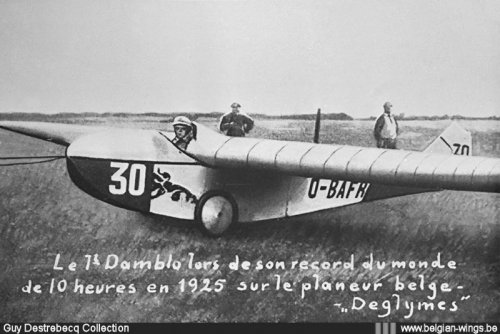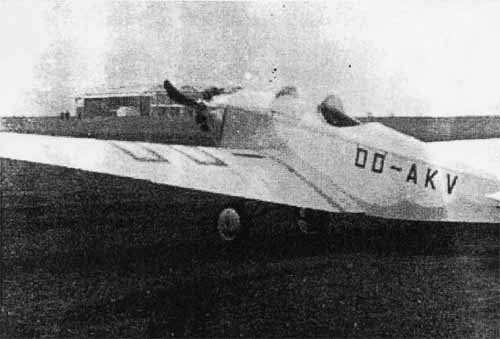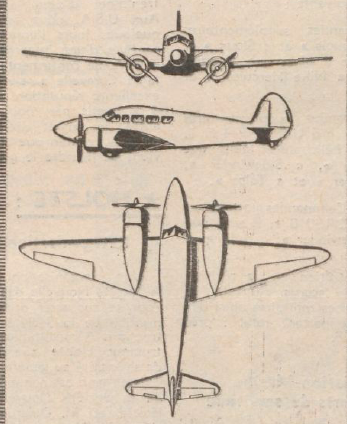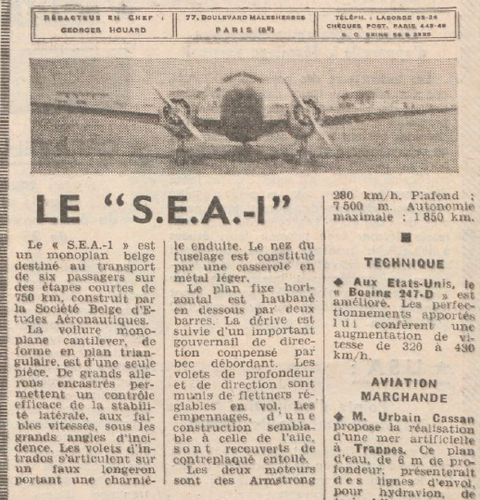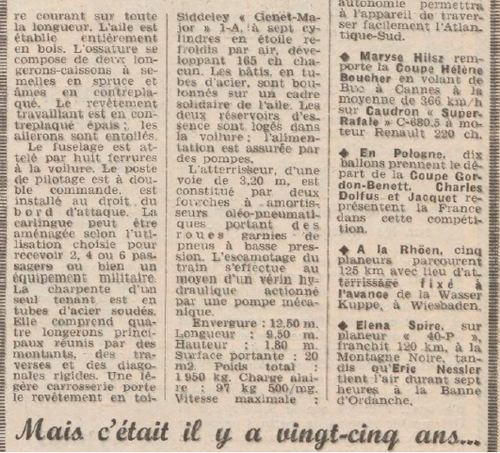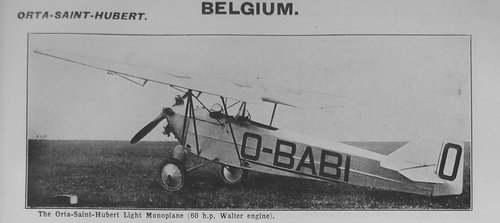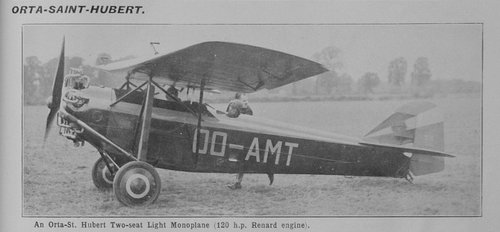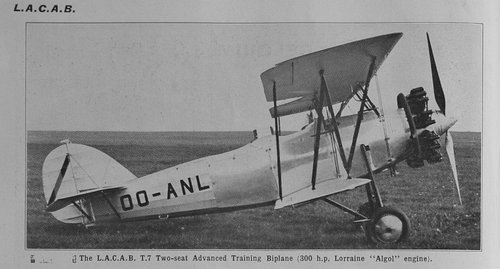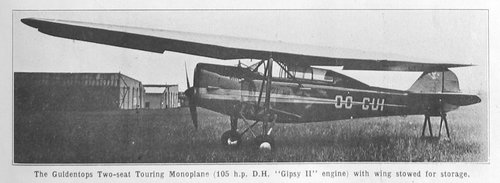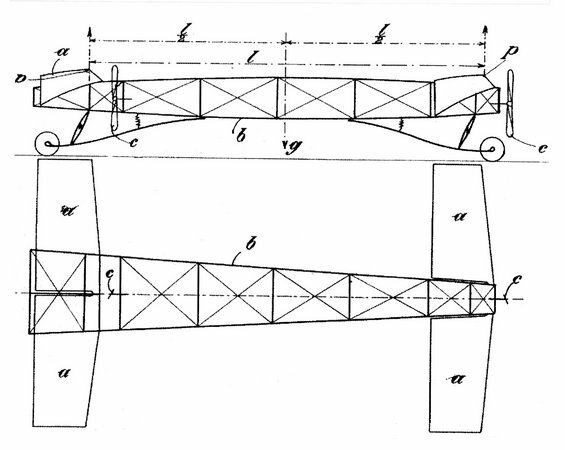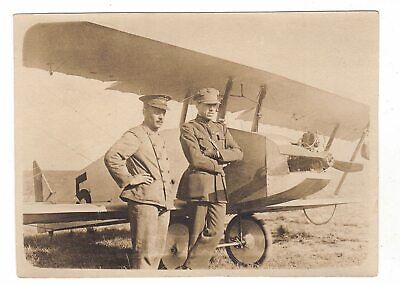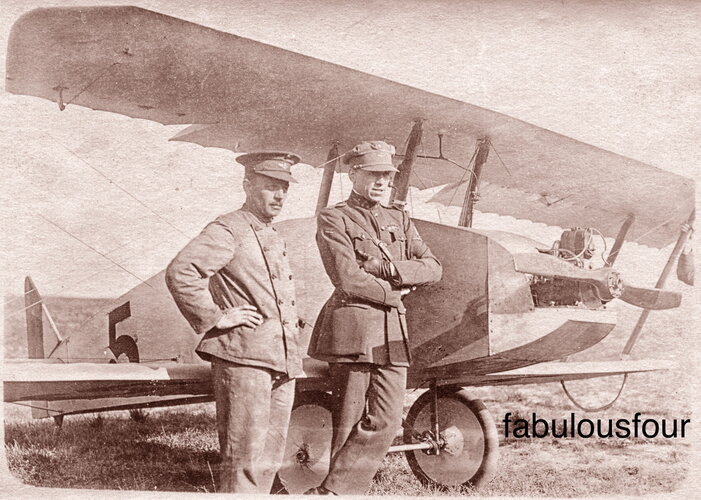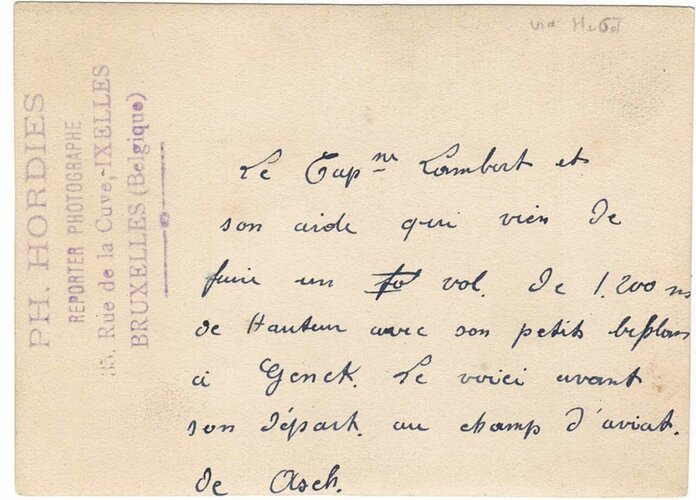L'OISEAU RARE DU No 42: L'AVIETTE EMA / FABRY / SHBP
THE RARE BIRD No. 42: L'AVIETTE EMA / FABRY / SHBP
In number 42 of the second quarter 1984 of the review AELR, Rare Bird section, appeared two photos of a small biplane whose identification was offered to readers.
It seems that no response was received and the rare bird was forgotten.
Fortunately one of our members, R. Heymans, in a correspondence published in No. 77 asked if the competition for the identification of this aircraft remained open. This was confirmed in No. 78 and to broaden the supply of answers, the rare bird was identified by the editorial staff as the Fabry aviette, a set of 13/18 photos remaining offered to readers who would provide more details on the history of this aircraft - a subject of which we don't know much.
Monsieur R. Heymans was, again, the only one to come forward by sending us two documents: an extract from the "Conquete de l'Air" of March 1928 and a photocopy of the OO-AKF. R. Heymans will therefore receive the set of photos.
The March 1928 article, written by Victor Boin, was particularly interesting because it confirmed Fabry as the designer, dating from 1923, and called l'Aviette EMA.
We had never made a connection between the two because the differences between these two small machines
were more striking than their similarities. However, assuming that Victor Boin had his information from a primary source at the time, we are obliged to accept an evolution of EMA / Fabry.
L'AVIETTE EMA
Space is lacking here to describe the circumstances of the blossoming of the series of gliders and aviettes which marked the 1920s and whose promoters, designers, and builders were the pioneers of our aeronautical industry between the two wars. This period, forgotten today, is rich in success since our gliders and airplanes held their rank - sometimes coming first, moreover - in international competitions.
These early gliders were quickly equipped with small engines to facilitate their movements, becoming aviettes, the ancestors of modern sport and tourism aviation.
At the time, there was only military aviation which also controlled civil aviation and an embryonic technical service.
The beginnings of gliding in Germany, followed by the same movement in France, aroused great enthusiasm among our pilots, craftsmen, and engineers. The civilians were mixed with the soldiers and among these last the commandant-aviateur.
Daumerie, at the time commanding the EMA (EMA: Ecole Militaire d'Aviation or Ecole Militaire d'Asch) decided to build a glider meeting the demands of the moment. He was the only one to choose the biplane formula, his 'competitors' (here, we speak of competition and not of commerce) - Simonet, Poncelet, Jullien, de Glymes and others - all opted for the monoplane.
In the "Conquete de l'Air" of 01 December 1923, Daumerie happily explained the origins of this machine which seems to have survived a decade - from April 1923 to January 1933. However it underwent several modifications including a radical one.
Commandant Daumerie made the plans and calculations for the EMA glider/aviette on the basis of surplus aircraft parts. The construction, or rather the assembly, was carried out by the artisans of the EMA. The biplane formula was chosen for a greater safety factor (solidity), despite increased aerodynamic drag. Daumerie hardly believed in the monoplane. He does not cite the origin of the recovered parts - probably coming from decommissioned WW1 aircraft. What is immediately striking is the fuselage shape which matches that of a large wing profile.
A closer examination suggests a fuselage created from surplus Nieuport parts. The bottom of the fuselage shows a straight line while the upper edge clearly shows a very pronounced rounding. If Daumerie hoped to obtain additional lift from the fuselage in this way, he did not mention it. The wing could be of German origin (modified Fokker D VII?). The leading and trailing edges are straight and the ends square. The four cabane struts connecting the upper wing to the fuselage are sharply tilted forward. The horizontal stabilizers have a generous span while the vertical tail and its rudder were triangular in shape. The glider was completed in April 1923 and weighed 170 kg. The bearing surface was 21 m2, the span of the upper wing was 8 m 64, that of the lower wing 6 m 40. Total length was 4 m 23.
It was capitaine Lambert who made the flight tests and who appears to have remained the titular pilot of this hybrid machine during the first years of its existence. The EMA glider was first tested on the slopes of the small dunes of Mechelen-sur-Meuse which offered a drop of about 25 meters. Lambert made 4 flights there with an average duration of 35 seconds. Then, it was a series of flights along the cliff of Lixhe where Simonet also trained on the Poncelet 'Castar'. The most beautiful flight lasted 75 seconds. Finally, at Remouchamps, during four flights, the EMA glider succeeded in a flight of 2 minutes 54 seconds - at the time, an (unofficial) duration record for Belgian gliding. But all these tests took time because of the teaching demands of the EMA, the difficult roads and slow set-up at launching points, and poor weather conditions all conspired to prevent a continuous and rapid tune-up. The EMA glider was therefore unable to participate in the Vauville competition.
However, under the patronage of King Albert, a competition of aviettes (motorized gliders) was organized in Brussels in November 1923. Daumerie and Lambert decided to motorize the glider which thus became the EMA aviette. Note that this aircraft was also called on a few occasions the Lambert Aviette, named after its pilot, or the Daumerie Aviette, named after its designer, or simply l'aviette militaire. The 1000 cc Anzani 2-cylinder engine, although ordered in July, was only delivered a few days before the meeting and installation could not be completed in time. In the powered version, weight increased to 240 kg (70 kg of which was for the engine, fuel, and oil tanks).
The first day of the Brussels meeting was embarrassing for the EMA aviette, Lambert barely managing to take off without being able to gain altitude. The culprit of this poor demonstration was the EMA-built propeller. It is assumed that another propeller was then mounted because, the next day, Lambert had climbed to an altitude of 300 meters.
Note that witnesses of this performance have emphasized that the aircraft was flying low tail. In the absence of modification - changing the location of the wing or the pilot - the centre of gravity had to
have moved forward making the aviette nose-heavy nose. Lambert also complained of its handling, giving witnesses the impression that the c/g had shifted too far aft.
Returning from Asch, Lambert continued to focus and climbed to 1,200 meters, hoping to improve performance later.
In December 1923, Daumerie wrote that the technical service had carried out static tests on the EMA aircraft, finding no deformation of the structure under load 4. The experiment was not continued beyond this but calculation/extrapolation established that the trim had a safety coefficient at least equal to 6.5.
After this, we hardly hear of the EMA aviette. She followed the EMA and Daumerie to Wevelghem in 1924 - this transfer being due to the closure of the Asch aerodrome. Maybe Lambert or other EMA pilots continued to fly the aviette for fun? Maybe she was put back in a shed awaiting a better day?
Anyway, it seems that it was profoundly modified as we will discuss later.
L'AVIETTE FABRY
R. Fabry is one of the plus belles figures of Belgian military aviation between the two wars. Let us cite a 1924 a parachute jump of 1000 meters and, in 1925, an endurance flight of 15 hours.
In 1927, Fabry traveled 15,000 km alone on a motorcycle in black Africa, including the Congo. In 1928, with 3 teammates and two cars, he linked Liege to Cape Town via the Sahara and the Congo. It was a sporting feat doubling as a reconnaissance mission in order to find the potential stopovers for a future Belgium-Congo air link.
In December 1930, with capitaine Vanderlinden, capitaine Fabry made the 3rd successful Belgium-Congo flight - the second via the Sahara. On board a Breguet 19 (OO-AKP) Vandedinden and Fabry reached the Belgian colony 8 days, 9 hours and 25 minutes after leaving Brussels. The return, alas, will result in a breakdown near Lake Chad which will delay them there for many weeks. Nevertheless, finally recovered, the two airmen covered the Chad-Brussels distance in less than 6 days. But, let's go back to 1928, when Fabry - still a lieutenant - was on duty at EMA Wevelghem. Always in search of adventure, he explored a hangar. There he discovered Daumerie's aviette less its engine. According to Victor Boin's article, he adapted a 500 cc Gillet motorcycle engine to the aviette. Some remarks are in order: the Fabry aviette no longer looks much like the EMA aviette. The fuselage was different and there is a notch in the wing above the cockpit. The cabane struts are vertical instead of tilting forward, modifying the upper wing positioning. The fin is rounded to the shape of a comma, presumably recovered from an aircraft of German origin. The distinctive geometry of the engine frame, the landing gear, and the horizontal stabilizers visually connect the two aviettes.
If we accept the story of the 1928 Boin article, Fabry would have adapted the Gillet engine to the existing structure. Thus, it remains to be determined when the radical modification of the airframe took place and who was the initiator. There are several identified photos of Aviette Fabry but at least one, according to better researchers than us, was taken in front of the hangars of Asch, with an unidentified engine. So what was Fabry's role? That of a pilot or a transformer? According to Victor Boin, Fabry executed very beautiful flights - even in bad weather, climbing without difficulty up to an altitude of 200 meters (to be compared with Lambert's 1,200 meters with the much larger Anzani engine (with a cylinder capacity double that of the Gillet). Fabry would have declared his total satisfaction with the handling and the handling of the aviette.
L'AVIETTE SHBP OO-AKF
A third existence will soon be offered to the EMA / Daumerie / Fabry aviette, while opening up another mystery.
In July 1930, the registration OO-AKF was granted to a SHBP aircraft (n° 208 of the Belgian registration sequence). The name Simonet is associated with this plane although Victor Simonet died during the 1925 meeting at Vauville in the accident of the Poncelet 'Castar'.
There is little doubt that OO-AKF (photographic evidence only) is indeed the same machine that concerns us today. We can only assume that the aircraft was always attached to Daumerie and that, after Fabry's restoration to flight condition, the owner ceded it to SHBP. Previously. from 1923 to 1930, the aviette was not registered. The separation of the civil and military aeronautical authorities, occurring in the meantime, could not possibly tolerate the existence of an anonymous plane - despite it having been submitted to the technical service in 1923. Perhaps Daumerie was forced to part with the aviette?
When it comes to SHBP, we have a lot more questions than answers. It seems that these initials initially represent an association, a union, of four enthusiasts: Simonet, Haus, Bulte, and Poncelet (or Pelletier, according to a SABCA brochure published in 1970). These initials appeared for the first time in 1925 when Victor Simonet had an aviette built which became O-BAFQ. Simonet had asked the engineer Haus, from the technical service, to calculate the possibility of creating a monoplane aviette using the upper wing of a Fokker D VII. Bulte would have designed the fuselage and the whole would have been built by Poncelet. This last point is far from established because 'P', according to that SABCA brochure, could mean Pelletier (about whom we know absolutely nothing). On the other hand. Bulte was also a constructor and could very well have built this aviette for Simonet. Professor Haus confirmed to us that he had done the calculations for O-BAFQ but does not remember a SHBP connection. Anyway, after the death of V. Simonet, this plane became O-BAJO with a more powerful engine. Haus refused to be associated with it.
The evolution of this O-BAFQ/O-BAJO plane does not directly interest us here and has nothing to do with the EMA/Fabry plane. Except that SHBP appears in July 1930 as the new owner of OO-AFK. Victor Simonet died in 1925, his brother inherited his various planes but he was a goldsmith. We do not know if the brother was interested in aviation - beyond the donation of a sports cups in memory of Victor. Haus' intervention was strictly limited to O-BAFQ. Haus certainly had nothing to do with SHBP in 1930. Bulte, meanwhile, has established his own aircraft construction firm and we doubt that he is still interested in acquiring a aviette when he has struggling to create his own designs. As for 'P' - Poncelet or Pelletier - we have nothing to add. It is true that other names revolve around the successive planes of SHBP: the pilots Hage (who would have flown O-BAFQ?) And Bauthier (the pilot of the O-BAJO) whose initials would perhaps have replaced those of the initial holders? But, here, we are deep in speculation and, once again, we can only implore the reader who could elucidate this mystery to contact us.
Still, photographic evidence proves that the SHBP OO-AKF aviette was the Fabry aviette which Victor Boin assures us to have been the EMA aviette. OO-AKF remained on the official registration until being cancelled on 25 January 1933. We do not know if there is a link but the other plane of which the SHBP remained the owner, the OO-AJO, ex O-BAJO. ex O-BAFQ, was removed from the registry on 02 February 1933. After the start of 1933, the SHBP had disappeared.
Guy ROBERTY

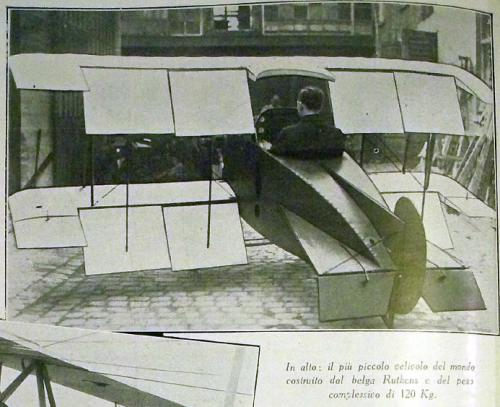
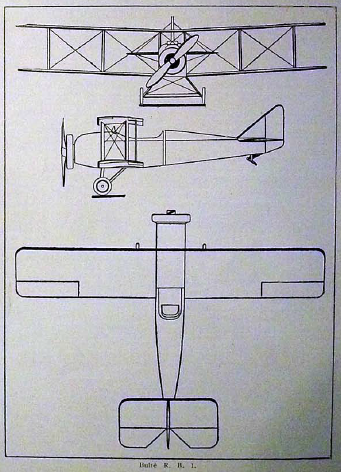
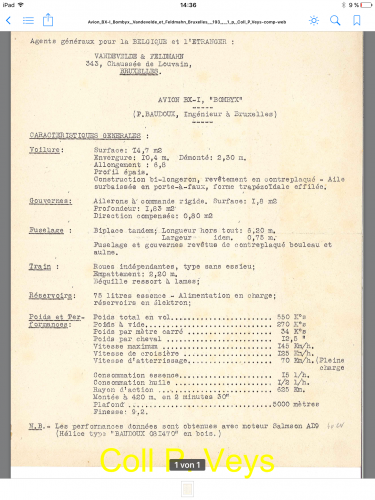
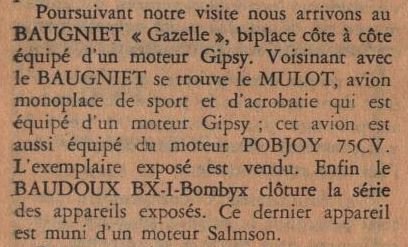
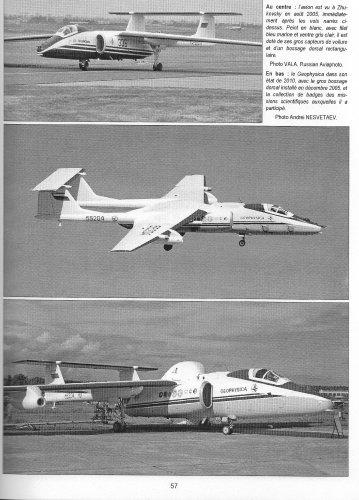
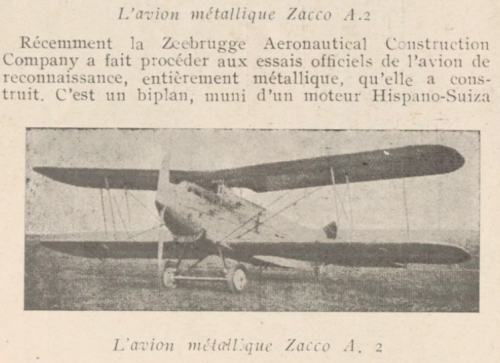
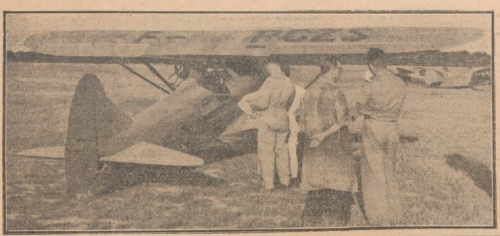
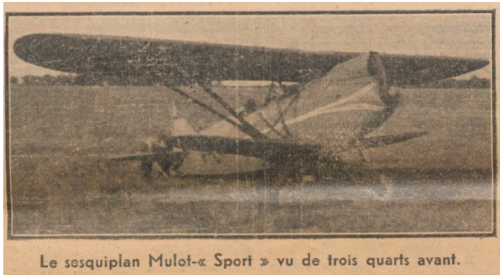
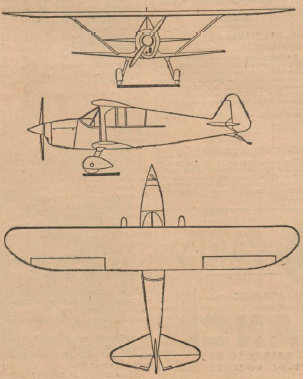
![Les_Ailes___journal_hebdomadaire_[...]_bpt6k9794942p_8.jpeg](/data/attachments/147/147436-7b55b22b938fd384b6851b8afd44766e.jpg)
